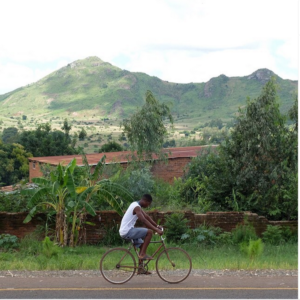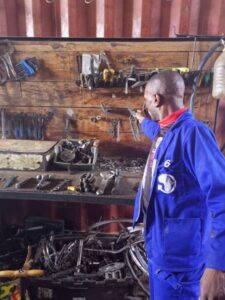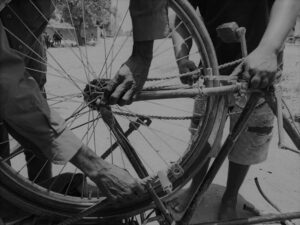
The history of Malawi’s—and Zomba’s—cycling is strongly intertwined with that of British colonialism in Africa. At first, only European colonial officials, merchants, and missionaries rode bicycles, imported to British Central Africa in 1895—the so-called British Protectorate Nyasaland since 1907. Malawians rarely cycled; they walked. The few Malawians who did cycle served as colonial officers or participated in European sports clubs. Bicycles were luxury goods used for touring, do sports, and colonial administrative tasks.
European colonial cycling culture diversified when an expanding Malawian elite bought bicycles. So did migrant workers who earned relatively higher wages at plantations and mines in Southern Rhodesia and South Africa.1 Many returning migrant workers considered bicycles high status goods—and buying one during their time away from home signified financial and professional success. Still the bicycle remained an object that only comparatively privileged people could afford. That changed in the 1940s. More Malawians started to incorporate the object into their daily lives and practices. While in 1945 imported bicycles to Nyasaland cost £ 26,000, eight years later import had skyrocketed twelvefold.2 Cycling popularized in Malawi and, more specifically, in Zomba. It changed how people viewed cycling.

Today, Zomba residents largely depend on bicycles as a major means of transport to get around, go to work, visit friends and family, shop, and carry goods. Bicycle taxis frequent the streets. In recent years, the city council has recognized that Zomba’s urban planning and transport system cannot do without acknowledging how importance the bicycle is in people’s daily lives. When the city conducted traffic counts at various locations, it discovered that bicycles are by far the most used mode of transport—even ahead of the much commented on minibuses or motorbikes.3 It is unimaginable to think of urban Zomba today without the bicycle—and the abundance of bicycle repair shops that dot the city and support today’s vibrant cycling culture. Tellingly, it shows how much how changed in Zomba over the past 100 years in how people and policymakers perceive cycling’s role.

David Drengk, a research fellow at the chair of history of technology and economy at Technical University Dresden and Africanist, is carrying out the research to reconstruct Zomba’s cycling history. The research is part of Cycling Cities: The African Experience and made possible by The African Urban Mobilities: Past, Present and Future Network with support from the University of Witswatersrand, History Workshop, South Africa, University of College London Urban Laboratory; History Department, Bayero University, Nigeria, and Eindhoven University of Technology, TIS History Lab and SHT with support from VREF.
1 McCracken, 2011.
2 Irvine 1959, 170.
3 Zomba City Council, “Zomba Urban Profile 2017-2022,” 113.